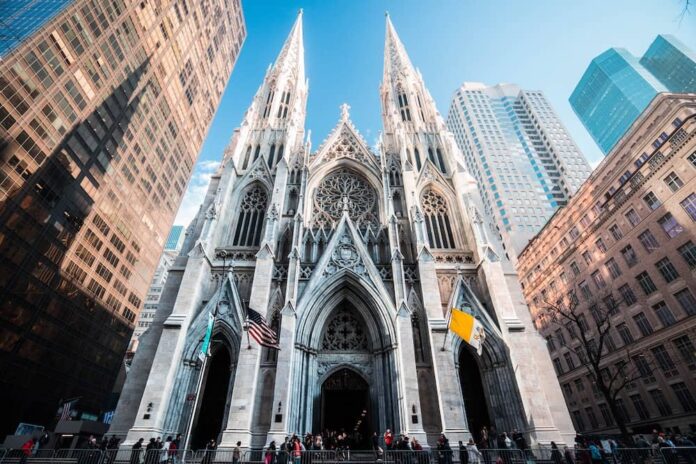What do steeply pitched roofs, stained glass, pointed arches, and gargoyles have in common? Here’s a hint: they are all remnants of a bygone era in New York; a period when nostalgia for the “goodness” of the medieval times was high. These features are architectural components of the Gothic Revival style, and still exist in and on buildings throughout New York City today.
The History of Gothic Revival Architecture
Gothic Revival is predated by the Gothic style of architecture, which originated in Europe in the middle ages. When the building of churches and synagogues began to gain momentum, architects sought a design that could duly contrast the “magnitude of God” against the humility of humanity. Thus the Gothic style, in all its ornate and extravagant glory, was born. The first credited structure in this style is the Abbey Church of Saint-Denis in France, which is estimated to have been built between the eleventh and twelfth century. Throughout Europe, this building served as a template for numerous other structures – including churches, palaces, and castles – until the age of the Renaissance, during which Gothic architecture fell out of style.
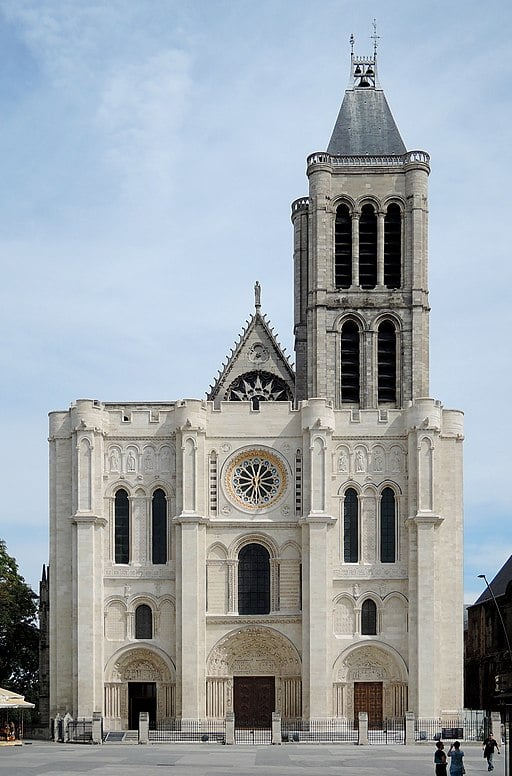
It wasn’t until the Romanticism of the eighteenth century that Gothic architecture was once again appreciated in Europe. Inspired by an enthusiastic sentimentality for the medieval era, the discarded Gothic style was given new life, and aptly renamed Gothic Revival or Neo-Gothic. The two names refer to the same style and can be used interchangeably. The first European structure credited in the Gothic Revival style is Horace Walpole’s Strawberry Hill House, built in Twickenham, London, in the late 1700s.
Similar to the social movements of the time, by the early nineteenth-century excitement for the Gothic Revival style spread throughout much of the world, ultimately making its way across the pond to the United States.
One of the earliest known Gothic Revival buildings in the U.S. is New Haven’s Trinity Church, designed in the early 1800s by Ithiel Town. This landmark is presumed to have inspired the Neo-Gothic movement across much of the country… including New York City.
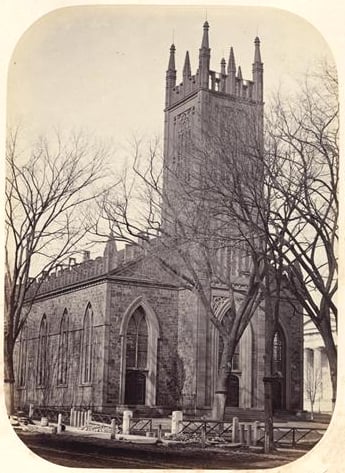
Gothic Revival in New York City
Gothic Revival had its heyday in New York from 1830 to 1890. Interestingly, that time period in New York City saw a variety of architectural styles, including but not limited to Gothic Revival, Federal, and Greek Revival. Similar to its residents, New York City’s architecture can often feel akin to a melting pot: many different cultures and styles interweaving to create a unique and eye-catching cityscape.
Presently, though Gothic Revival is no longer in vogue, examples of this style can still be seen throughout NYC. Many churches, colleges, and urban high schools are excellent examples of the architecture. As such, upper Manhattan boasts a particularly impressive amount of buildings in this style. Hamilton Heights and Morningside Heights – home to City College and Columbia University, respectively – are hotbeds for Gothic Revival.
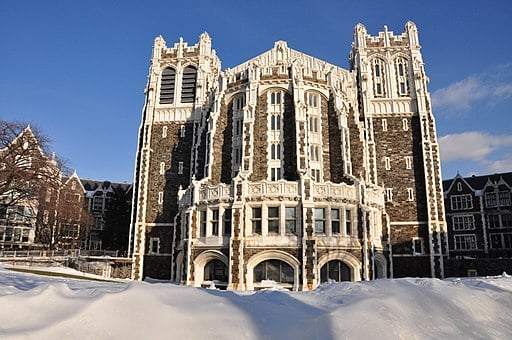
Established in the mid-1800s and built up throughout the early 1900s, The City College of New York has done an excellent job at preserving its history, rich with Neo-Gothic architecture. Pictured above is the cathedral-like Shepard Hall, the first building to be erected on the Hamilton Heights campus. Built between 1903 and 1907, the building still serves as a major hub for CCNY today.
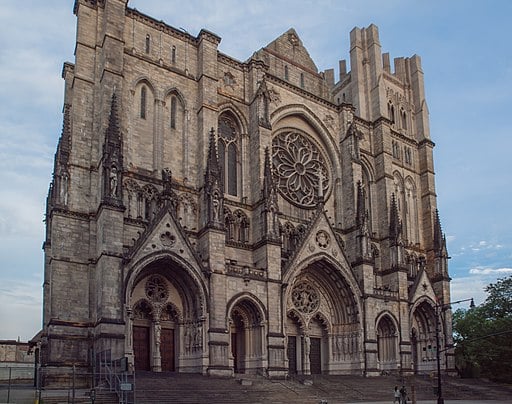
Construction on The Cathedral of St. John the Divine began in 1892, and though the crossing opened in 1909, the building has never technically been “completed.” The incomplete nature is largely due to stylistic changes and unfinished plans – initially the structure was designed in Byzantine Revival and Roman Revival styles, but was switched to Gothic Revival in 1909. Evidence of all three approaches can be noted throughout both the interior and exterior of the Cathedral.
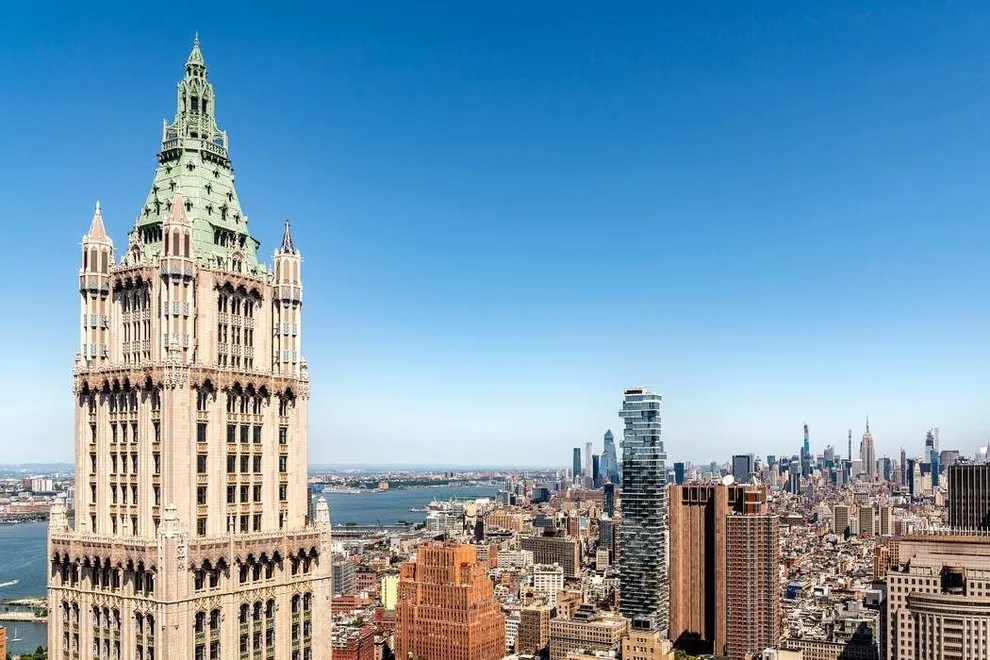
Nicknamed “the Cathedral of Commerce,” the Woolworth Building, completed in 1913, is one of the most famous skyscrapers in the country. Designed by architect Cass Gilbert, the structure is hailed as an excellent example of Neo-Gothic style, boasting turrets, ornate vaulted ceilings, and Gothic-style roofing. The Woolworth Building was the tallest structure in New York City until 1930.
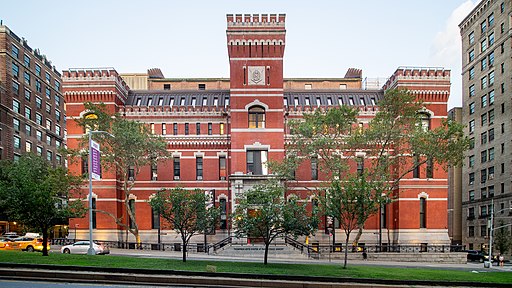
Located on the Upper East Side, the Seventh Regiment Armory, or Park Avenue Armory, was designed in the Gothic Revival fashion in 1880. The building, which once served as headquarters for the Seventh New York Militia Regiment, now houses the Park Avenue Armory Conservancy, a nonprofit cultural institution that presents unique visual and performance art.
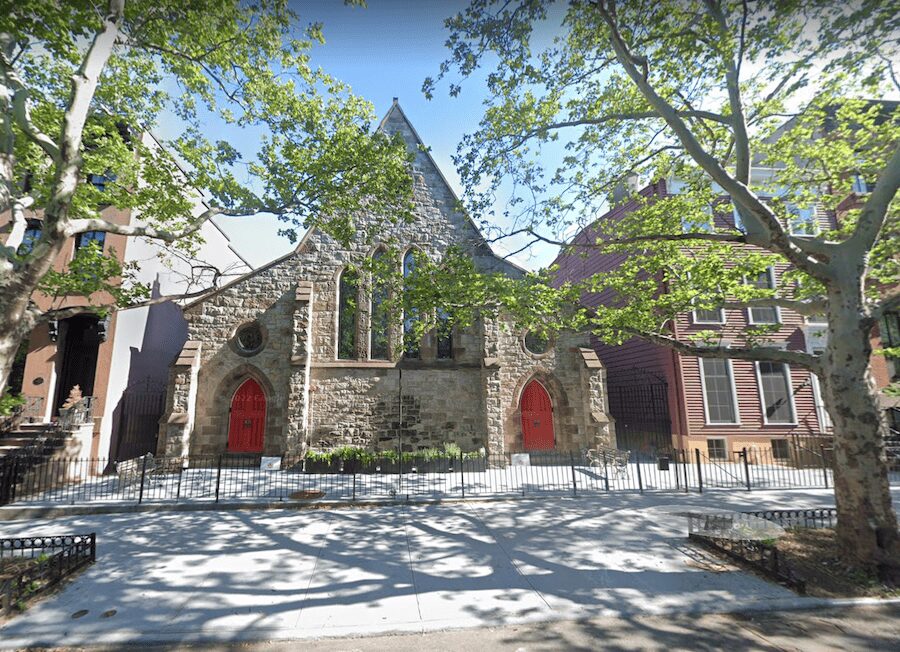
Though perhaps not as extravagant as other buildings, the Episcopal Church of the Ascension is another example of where Gothic Revival can still be seen today. Built in the mid-1800s, Greenpoint’s oldest church features simple yet strong characteristics of the style: stained glass windows and pointed arches are prevalent throughout.
No matter how big or small the structure, buildings designed with Gothic Revival in mind serve as both a picture into the past and an inspiration for the future. The style carries stories dating back hundreds of years, memories of a moment when the romantics were revered, and elegance was enlightening.
On the merits of the approach, American Landscape Architect Charles Jencks put it best when he was quoted saying the following: “If you look at Gothic detailing right down to the bottom of a column or the capital of a column, it’s a small version of the whole building; that’s why, like dating the backbones of a dinosaur, a good historian can look at a detail of a Gothic building and tell you exactly what the rest of the building was, and infer the whole from the parts.”
The era may have ended, but the legacy of Gothic Revival remains strong in New York. Walk through the city and look for the identifiable features – ornate stained glass, elegant pointed arches, vaulted ceilings – and it may surprise you how easy it is to spot when you know what you’re looking for.
Emily Bice is a New York based writer born in Michigan, but with family in Canada - so on paper she’s the nicest person you’ll ever meet. Emily graduated from The University of Michigan’s School of Music, Theatre, and Dance. She has worked as an olive oil farmer, press correspondent at Cannes, and in television, but her favorite job is writer. Playwriting credits include before the flood (The Chain Theatre, NYC), Purgatory (developmental workshop, Ann Arbor, MI), See You In A Few (one act, the thing theatre company, Zoom). Check out more of her work at emilyabice.com!


